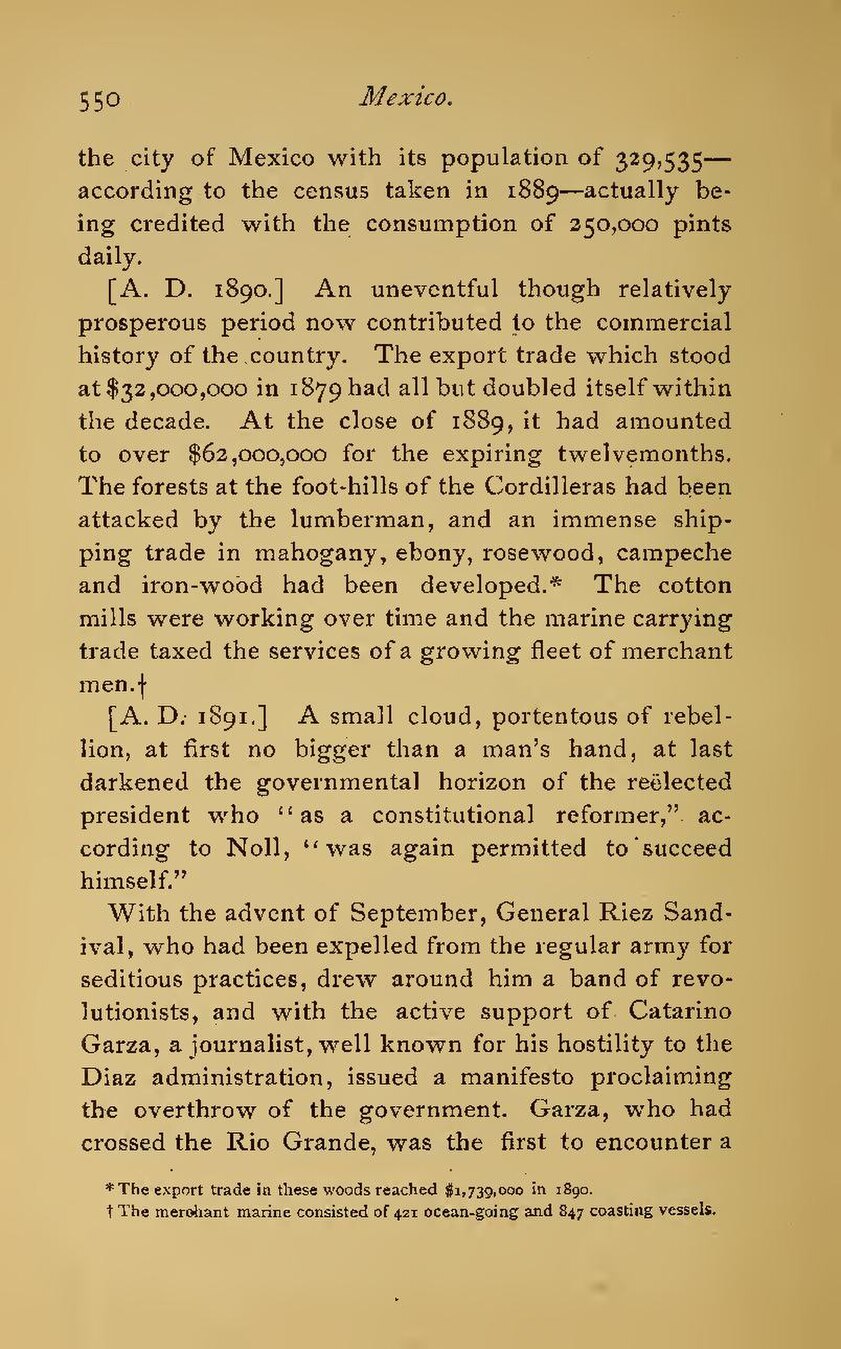the city of Mexico with its population of 329,535—according to the census taken in 1889—actually being credited with the consumption of 250,000 pints daily.
[A. D. 1890.] An uneventful though relatively prosperous period now contributed to the commercial history of the country. The export trade which stood at $32,000,000 in 1879 had all but doubled itself within the decade. At the close of 1889, it had amounted to over $62,000,000 for the expiring twelve months. The forests at the foot-hills of the Cordilleras had been attacked by the lumberman, and an immense shipping trade in mahogany, ebony, rosewood, campeche and iron-wood had been developed.[1] The cotton mills were working over time and the marine carrying trade taxed the services of a growing fleet of merchant men.[2]
[A. D. 1891.] A small cloud, portentous of rebellion, at first no bigger than a man's hand, at last darkened the governmental horizon of the reelected president who "as a constitutional reformer," according to Noll, "was again permitted to "succeed himself."
With the advent of September, General Riez Sandival, who had been expelled from the regular army for seditious practices, drew around him a band of revolutionists, and with the active support of Catarino Garza, a journalist, well known for his hostility to the Diaz administration, issued a manifesto proclaiming the overthrow of the government. Garza, who had crossed the Rio Grande, was the first to encounter a
